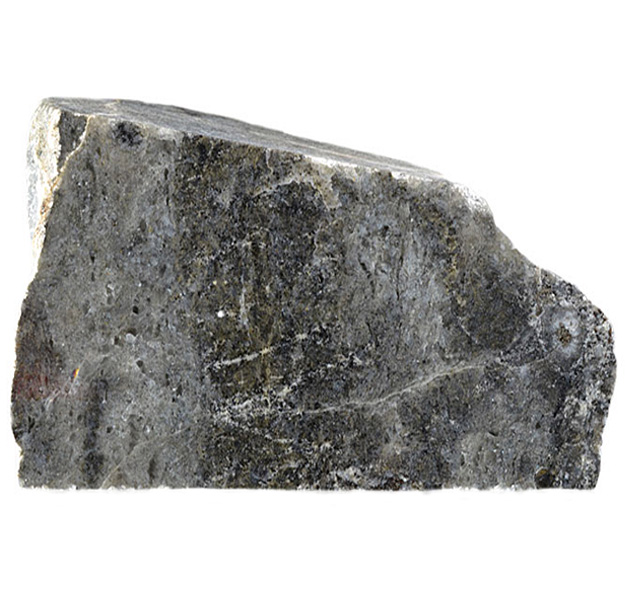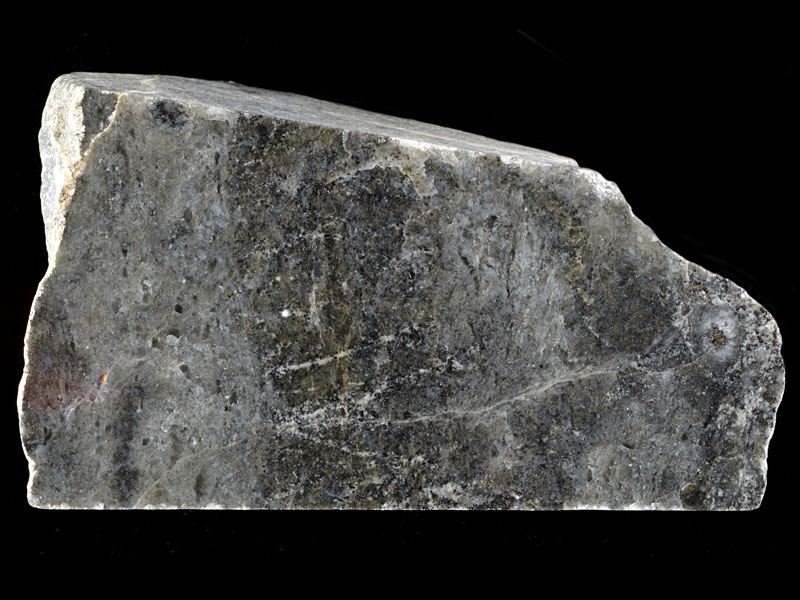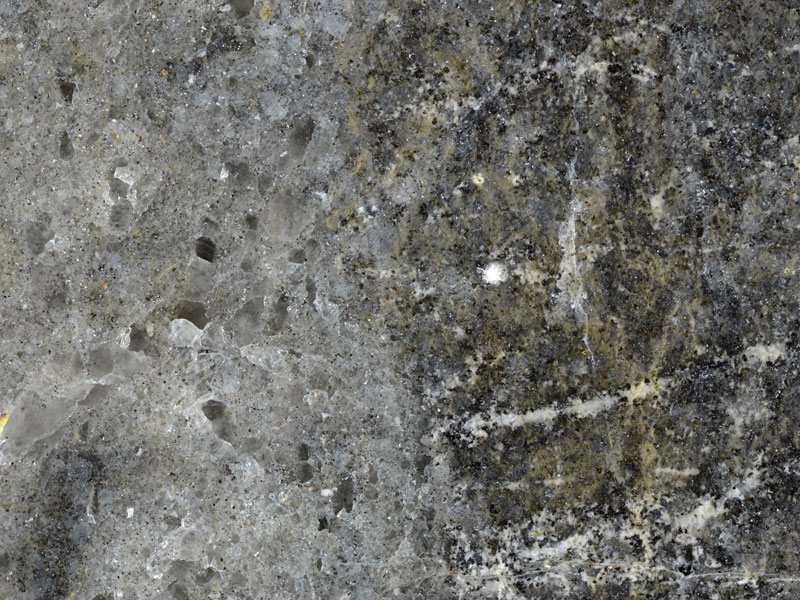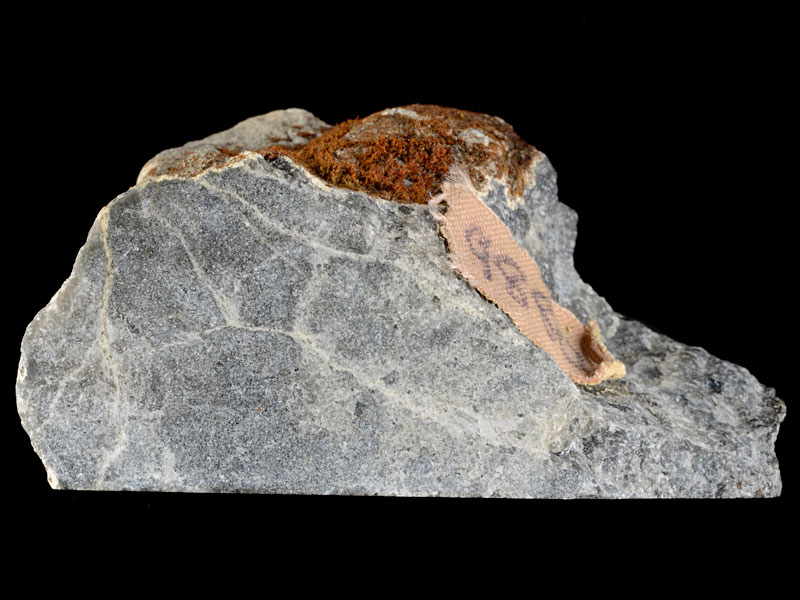
Fact sheet
The intrusion of the main Central complex on Rum caused heating and alteration of the surrounding Precambrian and Cretaceous sediments. Contact metamorphism (probably over 600 °C) and hot fluids created most of the textures in this rock, which has been completely recrystallised. The rock probably originated as a Cretaceous limestone, and the metasomatism transformed it into a calc silicate skarn rock. Skarn is a term applied to rocks that have been transformed by the intrusion of an igneous rock, introducing both heat and fluids and sometime causing mineralisation, which is why skarns are often the sites of ancient mining activity. This sample came from Allt nam Ba on the Isle of Rum.
In thin section most of the rock is composed of metamorphic calcite, although it is rich in impurities. The rock also contains several unusual metamorphic minerals that are difficult to identify. One such mineral is tilleyite, a calcium silicate mineral named after the famous Cambridge academic Cecil Edgar Tilley (1894—1973). Rotation 1 shows lamellar twinned tilleyite.
The United Kingdom Virtual Microscope (UKVM) collection consists of igneous, sedimentary and metamorphic rocks from around the UK.
It is intended as a teaching resource, helping to tell the story of the common rock types and how they form, and reflecting the history of the UK at the margins of the continent of Europe. The collection is a series of teaching sets, for example igneous rocks from the North Atlantic Igneous Province and SW England; high-temperature metamorphic rocks from Scotland and low-temperature metamorphic rocks from Wales; and sedimentary rocks, including English limestones and sandstones.









